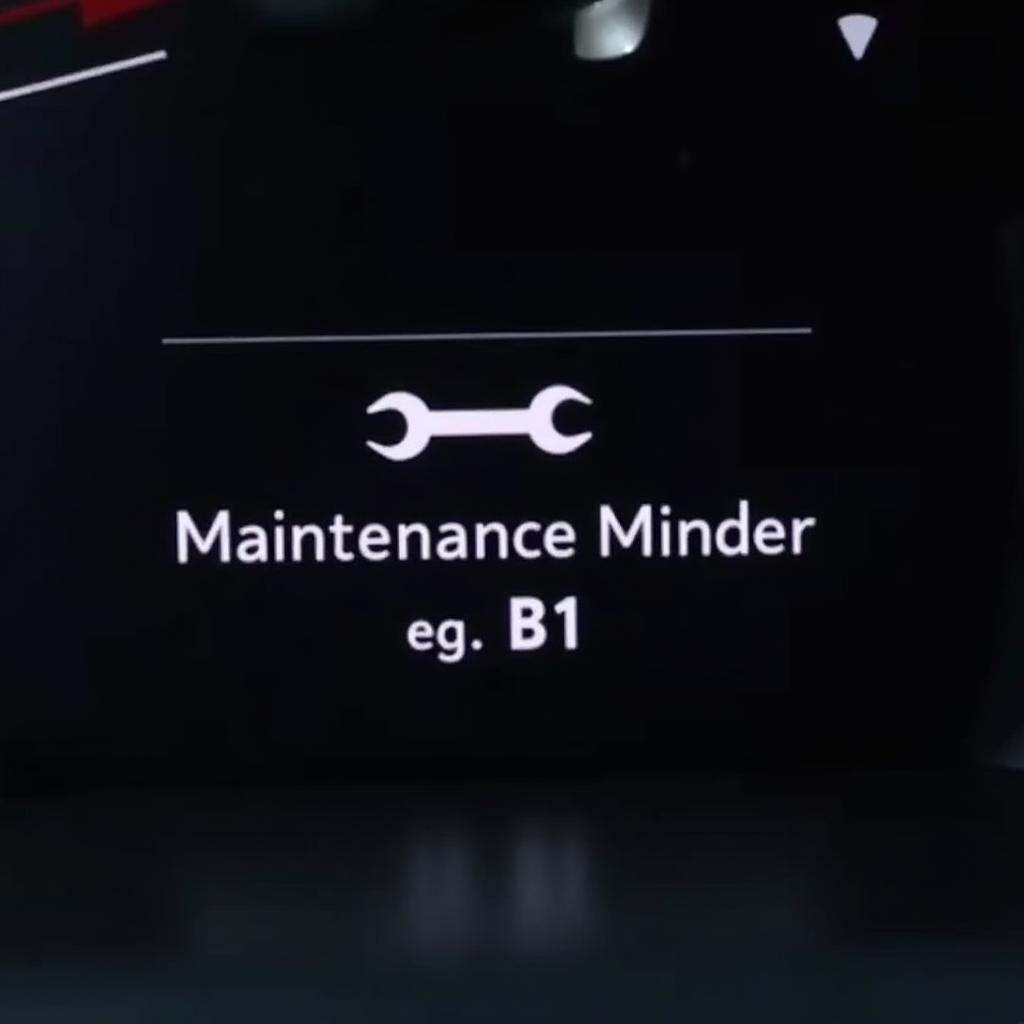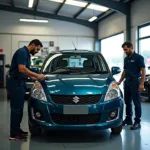Understanding the ins and outs of your Honda’s paid service schedule can feel like navigating a maze. You want to keep your car running smoothly without breaking the bank, but deciphering those service codes and knowing what’s essential versus optional can be tricky. That’s where we come in. This guide is designed to demystify Honda Car Paid Service, providing you with the knowledge you need to make informed decisions about your car’s maintenance.
Deciphering Your Honda’s Maintenance Minder System
Honda vehicles come equipped with a handy feature called the Maintenance Minder system. This system takes the guesswork out of scheduling service by analyzing your driving conditions and alerting you when it’s time for specific maintenance tasks. Forget about rigidly adhering to mileage-based intervals – the Maintenance Minder system tailors the service schedule to your car’s unique needs.
When you see a wrench icon illuminate on your dashboard, accompanied by a sub-code (like A1, B1, etc.), it’s time to consult your owner’s manual or a trusted Honda service advisor. These codes correspond to specific maintenance items, ensuring you only pay for the services your Honda actually requires.
Essential Honda Car Paid Service Items
While your Honda’s Maintenance Minder system provides personalized service recommendations, certain maintenance items are universally crucial for all vehicles. These services ensure the longevity, performance, and safety of your Honda:
- Oil and Filter Change: Regular oil changes are the cornerstone of car maintenance. They lubricate the engine, prevent premature wear and tear, and help maintain optimal fuel efficiency.
- Tire Rotation and Pressure Check: Rotating your tires ensures even wear and extends their lifespan. Maintaining proper tire pressure is crucial for safe handling, fuel efficiency, and tire longevity.
- Brake Inspection and Service: Your brakes are paramount for safety. Regular inspections ensure they’re in top condition and allow for early detection of potential issues.
- Fluid Checks and Top-Ups: Various fluids keep your Honda running smoothly, including coolant, brake fluid, transmission fluid, and windshield washer fluid. Regular checks and top-ups prevent costly damage and ensure optimal performance.
Understanding the Difference: Scheduled Maintenance vs. Repairs
It’s important to differentiate between scheduled maintenance and repairs. Scheduled maintenance, as dictated by your Honda’s Maintenance Minder system, involves routine procedures designed to prevent issues before they arise. Repairs, on the other hand, address problems that have already occurred.
By adhering to your Honda’s recommended maintenance schedule, you’re proactively investing in its well-being and potentially avoiding costly repairs down the road. Think of it as preventative healthcare for your car!
Choosing the Right Service Provider: Dealer vs. Independent Mechanic
When it’s time for Honda car paid service, you have two primary options: a Honda dealership or an independent mechanic. Both have their pros and cons, so the best choice depends on your individual needs and preferences.
- Honda Dealerships: Dealerships offer specialized knowledge, factory-trained technicians, and access to genuine Honda parts. However, their services often come at a premium price compared to independent mechanics.
- Independent Mechanics: Independent mechanics may offer more competitive pricing and personalized service. However, it’s crucial to choose a reputable mechanic with experience working on Honda vehicles.
Tips for Saving Money on Honda Car Paid Service
- Shop Around for Quotes: Don’t hesitate to contact multiple service providers (both dealerships and independent mechanics) to compare prices for the specific services your Honda needs.
- Inquire About Service Specials: Many dealerships and mechanics offer discounts or promotional packages on common maintenance items. Be sure to ask!
- Consider Using Aftermarket Parts: While genuine Honda parts are generally recommended, high-quality aftermarket parts can offer significant cost savings without compromising performance. Discuss your options with your chosen service provider.
Conclusion
Staying on top of your Honda car’s paid service is an investment in its performance, longevity, and your peace of mind. By understanding your Honda’s Maintenance Minder system, knowing the essential service items, and choosing the right service provider, you can confidently navigate the world of car maintenance and keep your Honda running smoothly for miles to come.
FAQ
- How often should I change the oil in my Honda? Consult your owner’s manual or Honda’s Maintenance Minder system for specific recommendations. However, a general guideline is every 5,000-7,500 miles.
- What does it mean when the TPMS light comes on? The TPMS (Tire Pressure Monitoring System) light indicates low tire pressure. Check and inflate your tires to the recommended PSI.
- Can I perform basic maintenance tasks myself? While some basic tasks, like checking fluids, can be done at home, it’s generally recommended to leave more complex services to trained professionals.
Need Help?
Get in touch with our expert team via WhatsApp at +1(641)206-8880 or email us at [email protected] for personalized advice and assistance with all your Honda car service needs. We’re available 24/7 to help keep your Honda running its best.


